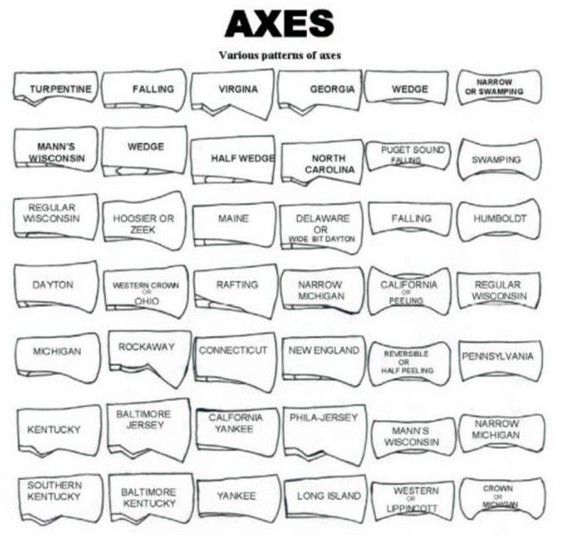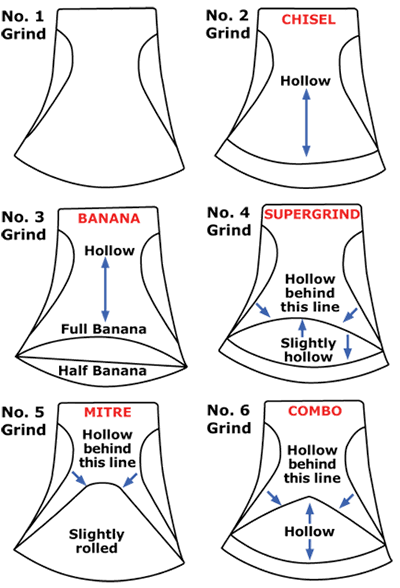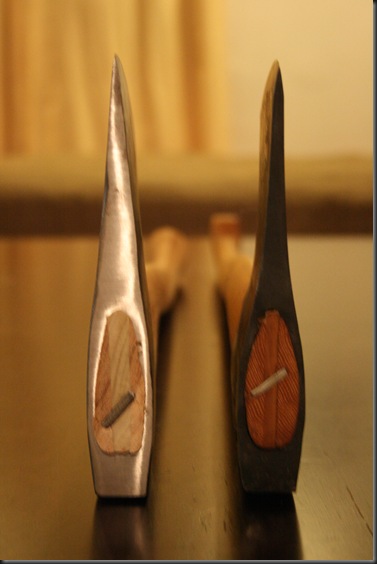Here's an image of some of the more common American axe head patterns in recent history.

I don't see the Hudson Bay pattern among these 37 images. I don't know why. This image does show the Hudson Bay.

Then, there are at least four and maybe six common blade contours and edge grinds.


Anyway, if axe nuts are anything like paddle nuts, one would "need" each of these 37 axe heads (including the Hudson Bay) in three different handle lengths (= 111), and each of those 111 axes in at least four different grinds (= 444), and each of those 444 axes in at least two different types of steels and temperings = 888 axes minimum for a complete tool set. This is a dithering array of possibilities.
But I'll continue my current focus on 3/4 single bit axes, perhaps of the classic Hudson Bay head pattern, which was historically carried by canoeists, trappers and woodsmen and which has instant visual aesthetics to many people, including me. However, I'm learning there are downsides to the Hudson Bay shape in terms of the strength of the head/handle interface and the efficiency of a curved edge (from edge heel to toe) versus a straighter edge such as the Maine head.
More research is needed. I have all winter.

I don't see the Hudson Bay pattern among these 37 images. I don't know why. This image does show the Hudson Bay.

Then, there are at least four and maybe six common blade contours and edge grinds.


Anyway, if axe nuts are anything like paddle nuts, one would "need" each of these 37 axe heads (including the Hudson Bay) in three different handle lengths (= 111), and each of those 111 axes in at least four different grinds (= 444), and each of those 444 axes in at least two different types of steels and temperings = 888 axes minimum for a complete tool set. This is a dithering array of possibilities.
But I'll continue my current focus on 3/4 single bit axes, perhaps of the classic Hudson Bay head pattern, which was historically carried by canoeists, trappers and woodsmen and which has instant visual aesthetics to many people, including me. However, I'm learning there are downsides to the Hudson Bay shape in terms of the strength of the head/handle interface and the efficiency of a curved edge (from edge heel to toe) versus a straighter edge such as the Maine head.
More research is needed. I have all winter.


